FAQ
How to build a new mindset

Ready to Hack Your Brain
Time investment
Just like working out at the gym, training your brain takes time. The most effective approach is to train twice a week. Once your brain understands the direction we’re aiming for, you can reduce it to once a week.
Online Q&A 20 minutes
Want to Start Hacking Your Brain but Have Questions?”
If you’d like a quick introduction and have some questions before getting started, sign up for our short Q&A session!
Contact
The studio is still closet, but if you want to reach out, contact me at Linkedin.
If you don’t find what you’re looking for, don’t hesitate to reach out – we’re here to guide you on your journey to a healthier brain!
Practical information
Pre session
How long does a intake takes?
During an initial intake, which can be done online, you can share what concerns you or what you would like to improve. This session takes approximately 30 minutes
How long does a regular neurofeedback session take?
A typical neurofeedback session usually lasts between 30 to 45 minutes. The first session may take a bit longer, around 60 to 90 minutes, as there’s an initial assessment and setup involved. Follow-up sessions typically take less time, as your brain’s training progresses. The exact duration may vary depending on your specific needs and goals.
What is the procedure of a session?
A welcome at our studio
A Setup: At the beginning of the session, electrodes (or sensors) are placed on your scalp to measure your brainwave activity. This process is painless and takes about 5–10 minutes.
The training session: During the session, you’ll typically be watching a movie. This is done while receiving real-time feedback about your brainwave activity.guide your brain toward a more optimal state. It’s designed to feel like a gentle nudge rather than a demanding task.
The end: Are you done with the session, we will disconnect the electrodes and talk briefly about your experiences.
How many sessions do I need?
The number of neurofeedback sessions required to feel more balanced can vary greatly depending on several factors, including your individual goals, the condition being treated, and how your brain responds to the training. However, here’s a general guideline:
1. Initial Results (3-10 Sessions)
Many people begin to notice some improvements after 3 to 10 sessions. Early benefits often include:
- Reduced anxiety or stress
- Improved sleep quality
- Better mood regulation
- Enhanced focus and clarity
This phase is about helping the brain begin to shift toward a more balanced state.
2. Significant Improvements (10-20 Sessions)
For more substantial and lasting changes, many individuals find that 10 to 20 sessions are necessary. At this point, people may experience:
- Enhanced cognitive function (memory, concentration, problem-solving)
- Decreased symptoms of depression or anxiety
- Better emotional regulation and resilience
The brain is generally learning to regulate its activity patterns more consistently, leading to longer-term benefits.
Does Neurofeedback have lasting effects?
Imagine you break your leg and have to wear a cast. After about six weeks, your leg is healed—if all goes well. But that doesn’t mean you’re immune to re-injuring it. Healing doesn’t make you invincible, just like any remedy—it’s a process, and it requires ongoing care.
The same is true for neurofeedback treatment. Research, particularly in ADHD, shows that while improvements in attention, impulsivity, and hyperactivity are noticeable right after treatment, the benefits continue to build over time. One study found that after six months, participants’ scores kept improving and remained stable for up to two years.
30 minute intake
During an initial intake, which can be done online, you can share what concerns you or what you would like to improve. This session takes approximately 30 minutes
Scanning your brain (EEG)
The process of scanning your brain (EEG) and the fist intakes typically takes about 2 hours
Relaxt mood helps
A typical neurofeedback session usually lasts between 30 to 45 minutes. The first session may take a bit longer, around 60 to 90 minutes, as there’s an initial assessment and setup involved. Follow-up sessions typically take less time, as your brain’s training progresses. The exact duration may vary depending on your specific needs and goals.
Do you wear contact lenses? Bring your glasses
Individual Variability
- Severity of Symptoms: More severe or long-standing issues may require more sessions to see noticeable improvements.
- Brain Response: Some people respond more quickly to neurofeedback, while others may require more sessions to achieve the desired balance.
- Consistency: Regular and consistent sessions lead to better outcomes, so sticking to a schedule is important for effectiveness.
Turn off your phone
A phone can interfere with the electrical signals of the neurofeedback software and hardware. Please turn off Wi-Fi and mute the sound
What happens during a session
After a session
What does a session looks like?
Setup:
At the beginning of the session, electrodes (or sensors) are placed on your scalp to measure your brainwave activity. The sensors are often attached to your head using a comfortable cap or gel.
This process is painless and takes about 5–10 minutes. Some people may feel slight discomfort from the electrode gel or the cap, but it’s usually minimal and temporary.
Training Session:
- During the session, you’ll typically be watching a movie, playing a video game, or listening to music. This is done while receiving real-time feedback about your brainwave activity.
- As you engage with the movie or game, the neurofeedback system provides visual or auditory cues to encourage your brain to produce more balanced brainwave patterns. For example, if your brain is producing the desired brainwaves, the movie might play more smoothly. If your brain is off track, the movie might freeze or the sound might stop until your brain produces the right pattern again.
- The feedback is subtle and serves to guide your brain toward a more optimal state. It’s designed to feel like a gentle nudge rather than a demanding task.
3. Mental Effort:
- Most people don’t find the training itself mentally taxing. It’s more like “passive learning” where your brain learns to regulate itself in response to the feedback.
- While you may be actively trying to stay focused or relaxed, you don’t need to consciously “do” anything. It’s more about the brain automatically adjusting itself over time.
- Some people may experience mild fatigue after a session, especially in the beginning, as their brain is adjusting to new patterns. But most find the sessions calming or rejuvenating once they get the hang of it.
4. Session Length and Frequency:
- Sessions usually last between 30 to 60 minutes, and the training frequency is typically 2–3 times per week during the initial stages. As you progress, the frequency might decrease, especially if you’re seeing improvements.
- You don’t need to prepare for anything strenuous beforehand, and the session will feel similar to watching a movie or playing a game, making it fairly easy to fit into your routine.
5. Progress:
- Neurofeedback training is typically gradual. It’s not like taking a pill where you see instant results. However, after several sessions, most people begin to notice subtle changes in their mood, focus, energy, or behavior.
- While the process is not hard, patience and consistency are important for seeing lasting results. Some individuals may take longer than others to see significant changes, but persistence is key.
6. Personalization:
- Neurofeedback training is customized to each individual based on their brainwave patterns and goals. Your practitioner will tailor the sessions to address specific issues (e.g., anxiety, focus, or sleep), making the process more targeted and effective.
What happens during a session?
Initial Setup (5–10 minutes): This includes attaching the sensors to your scalp (we work with individual electrodes) and ensuring they are properly calibrated to monitor your brain activity.
Training Time (20–40 minutes): During this time, you’ll engage in the actual neurofeedback training. This could involve watching a movie, playing a video game, or listening to sounds, with the goal of helping your brain achieve a more balanced state. The feedback you receive (through visual, auditory, or other means) helps your brain “learn” to adjust its activity patterns.
Post-Session (5–10 minutes): After the session, there may be a brief discussion about how you felt, any observations from the therapist, and potential adjustments for future sessions.
The exact length of the session may vary depending on the individual’s response to the training and the specific treatment plan. For some people, shorter sessions may be more effective in the beginning, while others may benefit from longer sessions as they progress
What do I need to do in a training?
You just need to relax! We connect you to our hardware. You can train with a movie, a drone session over Thailand, a dive into the ocean. You can choose any relaxt movie you like
Is it hard to do the trainings?
No, neurofeedback training is generally not hard to do. In fact, one of the reasons neurofeedback is so appealing is that it is non-invasive, non-pharmaceutical, and relatively easy for most people to engage in. The process is more about learning than strenuous effort, and participants typically find the sessions relaxing or even enjoyable.
If you’re experiencing burnout, a neurofeedback session may be adjusted to better suit your needs. In this case, the session will be shorter—typically lasting 10 to 15 minutes—and it may be more gentle and focused to help your brain relax and reset. This tailored approach helps avoid overstimulation, ensuring a more effective and comfortable experience
Does Neurofeedback hurt?
No, neurofeedback does not hurt. It is a non-invasive, pain-free process. During a session, small sensors are placed on your scalp to measure brain activity, but they don’t cause any discomfort. Some people may feel relaxed or even slightly energized during or after a session, but there is no pain involved. It’s a safe and gentle way to train your brain.
Am I getting tired?
Feeling tired after a neurofeedback session is quite common, but it varies from person to person. Here’s why:
Why Neurofeedback Can Cause Fatigue
- Mental Workout: Neurofeedback trains your brain to self-regulate, which can be mentally taxing, especially in the early sessions.
- Brain Adaptation: Your brain is learning new patterns, and this adaptation process can consume significant energy.
- Emotional Processing: Sometimes, neurofeedback sessions bring up underlying emotional or psychological patterns, which can feel draining.
- Intensity and Duration: Longer or more intense sessions can contribute to post-session fatigue.
Tips for after a Session
- Allow time to rest after your session.
- Stay hydrated.
- Avoid overstimulation (e.g., intense work or screen time).
- Get a good night’s sleep.
Fatigue typically decreases as your brain becomes more efficient with continued neurofeedback training. If the tiredness persists or feels excessive, discussing it with your neurofeedback practitioner is a good idea—they can adjust the session protocol.
Common reactions after Neurofeedback
- Fatigue or drowsiness
- Feeling relaxed or even “zoned out”
- Occasionally, mild headaches
- Increased mental clarity after resting
Can I still work after a session?
🧠 1. Feeling Energized and Focused:
- Many people report feeling clear-headed, focused, and calm after a session.
- Light or routine work tasks are often manageable and even more productive.
😴 2. Feeling Tired or Mentally Drained:
- Some people feel mentally fatigued or slightly foggy after a session, especially during the early stages of training.
- If you experience this, it’s better to schedule lighter tasks or take a short break before returning to work.
Factors that influence post-session productivity
- Session Intensity: Longer or more challenging sessions can leave you feeling more drained.
- Type of Work: Mentally demanding tasks may feel harder if you’re tired. Routine or less intense work is usually fine.
- Individual Response: Everyone reacts differently; some need rest, while others feel ready to tackle tasks immediately.
Pro tips for working after Neurofeedback
- Schedule Sessions Wisely: If possible, plan sessions at the end of your workday or during a time when you can rest afterward.
- Listen to Your Body: If you’re tired, take short breaks or do lighter tasks.
- Stay Hydrated and Eat Well: Proper nutrition and hydration support brain function.
- Track Your Reactions: Over time, you’ll notice patterns in how you respond to sessions and can plan accordingly.
Most people adapt after a few sessions, and post-session fatigue usually decreases over time. If you have ongoing concerns, discuss them with your neurofeedback practitioner—they can adjust the training protocol to better suit your needs
How many sessions to maintain?
Individual Variability
- Severity of Symptoms: More severe or long-standing issues may require more sessions to see noticeable improvements.
- Brain Response: Some people respond more quickly to neurofeedback, while others may require more sessions to achieve the desired balance.
- Consistency: Regular and consistent sessions lead to better outcomes, so sticking to a schedule is important for effectiveness.
Can neurofeedback help me?
A personalized treatment tailored
99 problems
I'm curious
I need more focus
Lorem ipsum dolor sit amet, consectetur adipiscing elit. Ut elit tellus, luctus nec ullamcorper mattis, pulvinar dapibus leo.
Can Neurofeedback help me?
Neurofeedback is a powerful tool that can be effective for a wide range of conditions, but it’s not necessarily a one-size-fits-all solution for every medical or psychological issue. While it has shown positive results in many areas, its effectiveness depends on the condition being treated, the individual’s brain activity, and other factors like the severity of the condition and any concurrent treatments.
I want to stay calm
Yes, neurofeedback has been shown to be effective for many individuals with ADHD (Attention Deficit Hyperactivity Disorder). It is increasingly recognized as a non-invasive, drug-free treatment that can help people with ADHD improve their symptoms. However, the effectiveness can vary from person to person, and it’s important to understand how neurofeedback works in the context of ADHD treatment.
How Neurofeedback Helps with ADHD:
Neurofeedback works by training individuals to regulate their brainwave activity. People with ADHD often have irregularities in brainwave patterns, especially in areas that control attention, impulse control, and emotional regulation. Neurofeedback aims to “retrain” the brain to produce more balanced and optimal brainwave patterns for focus, concentration, and self-control.
Common Benefits of Neurofeedback for ADHD:
Improved Attention and Focus:
- Many ADHD individuals have difficulty sustaining attention and staying focused on tasks. Neurofeedback helps the brain learn to increase theta waves (associated with relaxation) and reduce excessive beta waves (linked to anxiety or restlessness). This promotes better focus and concentration during daily activities, especially tasks requiring sustained attention.
Decreased Impulsivity:
- Neurofeedback can help improve impulse control, which is a common challenge for those with ADHD. By regulating brainwave patterns, individuals may become better able to control impulses, make more thoughtful decisions, and reduce behaviors like interrupting or acting without thinking.
Reduced Hyperactivity
I just want to try
Neurofeedback is most effective once a stressful situation has ended.
Imagine walking the Camino route. You develop a large blister but keep walking. The blister gets worse and doesn’t heal. Taking a break—or even stopping the route altogether—would be the best solution. The same principle applies to neurofeedback therapy.
Training a new mindset works best when the source of stress is no longer present. However, this principle doesn’t apply in the same way if you have ADHD, ADD, or dyslexia.
I have 99 problems
Neurofeedback is most effective once a stressful situation has ended.
Imagine walking the Camino route. You develop a large blister but keep walking. The blister gets worse and doesn’t heal. Taking a break—or even stopping the route altogether—would be the best solution. The same principle applies to neurofeedback therapy.
Training a new mindset works best when the source of stress is no longer present. However, this principle doesn’t apply in the same way if you have ADHD, ADD, or dyslexia.
I use Ritalin or an other drug
I'm going to a psychiatrist
If you are under the care of a psychiatrist, it may be beneficial to look for a neurofeedback therapist with extensive experience in this area.
Can Neurofeedback help me?
Neurofeedback is a powerful tool that can be effective for a wide range of conditions, but it’s not necessarily a one-size-fits-all solution for every medical or psychological issue. While it has shown positive results in many areas, its effectiveness depends on the condition being treated, the individual’s brain activity, and other factors like the severity of the condition and any concurrent treatments.
I have ADHD is this helpefull?
Yes, neurofeedback has been shown to be effective for many individuals with ADHD (Attention Deficit Hyperactivity Disorder). It is increasingly recognized as a non-invasive, drug-free treatment that can help people with ADHD improve their symptoms. However, the effectiveness can vary from person to person, and it’s important to understand how neurofeedback works in the context of ADHD treatment.
How Neurofeedback Helps with ADHD:
Neurofeedback works by training individuals to regulate their brainwave activity. People with ADHD often have irregularities in brainwave patterns, especially in areas that control attention, impulse control, and emotional regulation. Neurofeedback aims to “retrain” the brain to produce more balanced and optimal brainwave patterns for focus, concentration, and self-control.
Common Benefits of Neurofeedback for ADHD:
Improved Attention and Focus:
- Many ADHD individuals have difficulty sustaining attention and staying focused on tasks. Neurofeedback helps the brain learn to increase theta waves (associated with relaxation) and reduce excessive beta waves (linked to anxiety or restlessness). This promotes better focus and concentration during daily activities, especially tasks requiring sustained attention.
Decreased Impulsivity:
- Neurofeedback can help improve impulse control, which is a common challenge for those with ADHD. By regulating brainwave patterns, individuals may become better able to control impulses, make more thoughtful decisions, and reduce behaviors like interrupting or acting without thinking.
Reduced Hyperactivity
Hack your brain if you have...
ADHD
For more info about ADHD, click here
Depression
Read more if you have a depression, click here
Concentration issues
Read more about concentration issues, click here
Autism
For more info about Autism, click here
PTSS
Read more if you have a PTSS, click here
Can't get no sleep
Read more about insomnia issues, click here
Hack your brain if you need...
A calm mind
For more info about a calm mind, click here
Take more control of your emotions
Read more if you have a depression, click here
...
Read more about concentration issues, click here
...
For more info about Autism, click here
....
Read more if you need to take control of your emotions, click here
....
Read more about insomnia issues, click here
The science behind Neurofeedback
When did it Neurofeedback started?
Lorem ipsum dolor sit amet, consectetur adipiscing elit. Ut elit tellus, luctus nec ullamcorper mattis, pulvinar dapibus leo.
Did Nasa used Neurofeedback?
The process of scanning your brain (EEG) and the fist intakes typically takes about 2 hours
I want to learn more about this
A typical neurofeedback session usually lasts between 30 to 45 minutes. The first session may take a bit longer, around 60 to 90 minutes, as there’s an initial assessment and setup involved. Follow-up sessions typically take less time, as your brain’s training progresses. The exact duration may vary depending on your specific needs and goals.
Are there more trainers in NL?
The number of neurofeedback sessions required to feel more balanced can vary greatly depending on several factors, including your individual goals, the condition being treated, and how your brain responds to the training. However, here’s a general guideline:
1. Initial Results (3-10 Sessions)
Many people begin to notice some improvements after 3 to 10 sessions. Early benefits often include:
- Reduced anxiety or stress
- Improved sleep quality
- Better mood regulation
- Enhanced focus and clarity
This phase is about helping the brain begin to shift toward a more balanced state.
2. Significant Improvements (10-20 Sessions)
For more substantial and lasting changes, many individuals find that 10 to 20 sessions are necessary. At this point, people may experience:
- Enhanced cognitive function (memory, concentration, problem-solving)
- Decreased symptoms of depression or anxiety
- Better emotional regulation and resilience
The brain is generally learning to regulate its activity patterns more consistently, leading to longer-term benefits.
Are there any podcasts about this subject?
Individual Variability
- Severity of Symptoms: More severe or long-standing issues may require more sessions to see noticeable improvements.
- Brain Response: Some people respond more quickly to neurofeedback, while others may require more sessions to achieve the desired balance.
- Consistency: Regular and consistent sessions lead to better outcomes, so sticking to a schedule is important for effectiveness.
When did it Neurofeedback started?
Lorem ipsum dolor sit amet, consectetur adipiscing elit. Ut elit tellus, luctus nec ullamcorper mattis, pulvinar dapibus leo.
Did Nasa used Neurofeedback?
The process of scanning your brain (EEG) and the fist intakes typically takes about 2 hours
I want to learn more about this
A typical neurofeedback session usually lasts between 30 to 45 minutes. The first session may take a bit longer, around 60 to 90 minutes, as there’s an initial assessment and setup involved. Follow-up sessions typically take less time, as your brain’s training progresses. The exact duration may vary depending on your specific needs and goals.
Are there more trainers in NL?
The number of neurofeedback sessions required to feel more balanced can vary greatly depending on several factors, including your individual goals, the condition being treated, and how your brain responds to the training. However, here’s a general guideline:
1. Initial Results (3-10 Sessions)
Many people begin to notice some improvements after 3 to 10 sessions. Early benefits often include:
- Reduced anxiety or stress
- Improved sleep quality
- Better mood regulation
- Enhanced focus and clarity
This phase is about helping the brain begin to shift toward a more balanced state.
2. Significant Improvements (10-20 Sessions)
For more substantial and lasting changes, many individuals find that 10 to 20 sessions are necessary. At this point, people may experience:
- Enhanced cognitive function (memory, concentration, problem-solving)
- Decreased symptoms of depression or anxiety
- Better emotional regulation and resilience
The brain is generally learning to regulate its activity patterns more consistently, leading to longer-term benefits.
Are there any podcasts about this subject?
Individual Variability
- Severity of Symptoms: More severe or long-standing issues may require more sessions to see noticeable improvements.
- Brain Response: Some people respond more quickly to neurofeedback, while others may require more sessions to achieve the desired balance.
- Consistency: Regular and consistent sessions lead to better outcomes, so sticking to a schedule is important for effectiveness.
Set yourself up for succes
How to Boost Your Treatment Success
What can you do at home
Do you wear contact lenses?
If you wear contact lenses, please bring you glasses for the Neurofeedback session.
Explanation: Contact lenses can sometimes cause discomfort during longer neurofeedback sessions, especially if your eyes become tired or dry. Additionally, certain electrodes placed on the forehead or around the eyes may interfere with the lenses when you blink or move your eyes, affecting measurement accuracy.
Wearing glasses is often a better option, as they are more stable, cause less irritation, and do not interfere with brain activity measurements. If you usually wear contact lenses, we recommend wearing glasses during your neurofeedback sessions.
Relax
The process of scanning your brain (EEG) and the fist intakes typically takes about 2 hours
Train consistently
A typical neurofeedback session usually lasts one hour. This includes the setup, the breaks and the clues for a successful neurofeedback training you need to train consistent. two sessions a week. after 12 sessions we can go for 1 session a week.
Things you can do at home
The number of neurofeedback sessions required to feel more balanced can vary greatly depending on several factors, including your individual goals, the condition being treated, and how your brain responds to the training. However, here’s a general guideline:
1. Initial Results (3-10 Sessions)
Many people begin to notice some improvements after 3 to 10 sessions. Early benefits often include:
- Reduced anxiety or stress
- Improved sleep quality
- Better mood regulation
- Enhanced focus and clarity
This phase is about helping the brain begin to shift toward a more balanced state.
2. Significant Improvements (10-20 Sessions)
For more substantial and lasting changes, many individuals find that 10 to 20 sessions are necessary. At this point, people may experience:
- Enhanced cognitive function (memory, concentration, problem-solving)
- Decreased symptoms of depression or anxiety
- Better emotional regulation and resilience
The brain is generally learning to regulate its activity patterns more consistently, leading to longer-term benefits.
Exercise
Individual Variability
- Severity of Symptoms: More severe or long-standing issues may require more sessions to see noticeable improvements.
- Brain Response: Some people respond more quickly to neurofeedback, while others may require more sessions to achieve the desired balance.
- Consistency: Regular and consistent sessions lead to better outcomes, so sticking to a schedule is important for effectiveness.
Listen to binary music
Alpha music, designed to stimulate alpha brainwaves (8-13 Hz), is often created by artists and composers specializing in relaxing, meditative, or therapeutic music. This type of music is used for stress reduction, meditation, focus, and overall well-being. Below are some well-known musicians and artists recognized for creating alpha music:
This process is painless and takes about 5–10 minutes. Some people may feel slight discomfort from the electrode gel or the cap, but it’s usually minimal and temporary.
Artists recognized for creating alpha music
Steven Halpern
Style: New Age, relaxation music
Highlights: Steven Halpern is a pioneer in music that influences brainwaves. His albums, such as “Deep Alpha”, are specifically designed to stimulate alpha brainwaves using sound frequencies, gentle melodies, and a calming structure.
Recommended Listening: “Deep Alpha” or “Inner Peace”.
2. Marconi Union
Style: Ambient, chill-out
Highlights: This British band is famous for their track “Weightless”, often praised as one of the most relaxing songs ever. Its slow tempo (60 BPM) and harmonious tones help stimulate alpha brainwaves.
3. Brian Eno
Style: Ambient music
Highlights: Known as the founder of ambient music, Brian Eno has produced many works that create a meditative and calming atmosphere. Albums like “Music for Airports” and “Ambient 1: Music for Airports” are excellent for inducing alpha states.
Liquid Mind (Chuck Wild)
Style: New Age, relaxation music
Highlights: Liquid Mind, a project by Chuck Wild, offers extremely slow and soothing music designed to reduce stress and guide the brain into an alpha state.
Recommended Listening: “Liquid Mind VIII: Sleep” and “Liquid Mind XI: Deep Sleep”.
Jonathan Goldman
Style: Healing music, sound therapy
Highlights: Goldman focuses on brainwave training and sound therapy, using specific frequencies and harmonies to encourage alpha states.
Recommended Listening: “The Divine Name” and “Healing Sounds”.
Tom Kenyon
Style: Sound therapy, meditative vocals
Highlights: Kenyon combines his vocal techniques with binaural beats and meditative sounds to stimulate brainwaves, including alpha waves.
Anugama
Style: World music, meditation
Highlights: Anugama’s music often includes gentle rhythms and nature sounds that promote an alpha state of relaxation.
Recommended Listening: “Shamanic Dream” and “Healing”.
Artist who create isochronic tones
In addition to traditional musicians, some artists and producers specifically focus on binaural beats and isochronic tones, which directly stimulate alpha waves:
Kelly Howell: Known for her meditation and focus music.
iAwake Technologies: Develops tracks featuring binaural beats and meditative soundscapes.
Brain.fm: A platform offering music designed for brainwave optimization.
Explore these artists and tracks to experience the calming and focus-enhancing effects of alpha music.
Brain Health - Food
1. Fatty Fish
- Examples: Salmon, sardines, mackerel
- Benefits: Rich in omega-3 fatty acids, essential for brain cell structure and function.
2. Blueberries
- Benefits: Packed with antioxidants that protect the brain from oxidative stress and may improve memory.
3. Nuts and Seeds
- Examples: Walnuts, almonds, flaxseeds, chia seeds
- Benefits: Contain healthy fats, vitamin E, and antioxidants for brain protection.
4. Leafy Greens
- Examples: Spinach, kale, broccoli
- Benefits: Rich in vitamin K, folate, and beta carotene, supporting memory and cognitive function.
5. Eggs
- Benefits: High in choline, essential for memory and mood regulation.
6. Turmeric
- Benefits: Contains curcumin, which can cross the blood-brain barrier and reduce inflammation.
7. Dark Chocolate
- Benefits: Rich in flavonoids, caffeine, and antioxidants, supporting focus and mood.
8. Avocados
- Benefits: Contain healthy fats that support blood flow to the brain.
9. Whole Grains
- Examples: Oats, quinoa, brown rice
- Benefits: Provide steady energy and improve focus.
Brain Health - Supplements
Omega-3 Fatty Acids (DHA and EPA) Essential for cognitive function and mood regulation.
Vitamin D
Supports mood, memory, and overall brain health.
Magnesium
Reduces stress and supports neural function.
B Vitamins (Especially B6, B12, and Folate) Crucial for energy production and preventing cognitive decline.
Ginkgo Biloba Improves blood flow to the brain and supports memory.
Curcumin (from Turmeric)
Reduces brain inflammation and supports memory.
L-Theanine
Found in green tea; improves focus and reduces stress.
Probiotics
Support the gut-brain connection, improving mood and cognitive function.
Lifestyle Tips- Brain Health
Stay Hydrated: Drink plenty of water.
Exercise Regularly: Increases blood flow to the brain.
Sleep Well: Aim for 7–9 hours per night.
Manage Stress: Practice meditation, mindfulness, or yoga.
Stay Mentally Active: Read, do puzzles, or learn new skills.
Yes, we love tech!
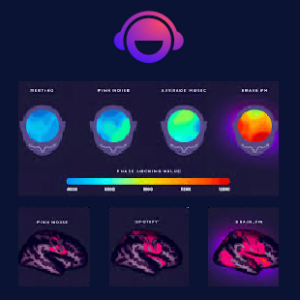

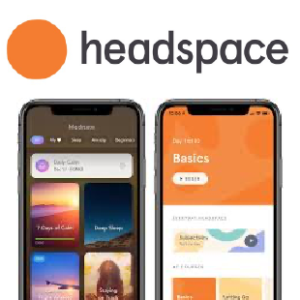

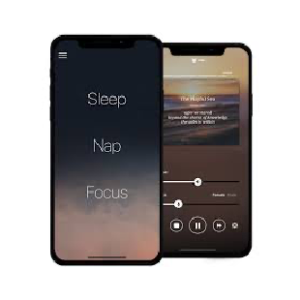
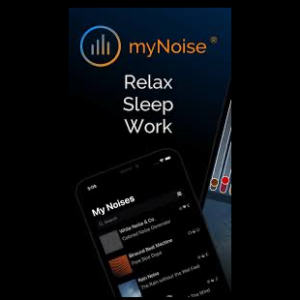
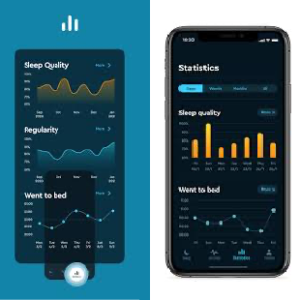

Tech to help your brain
Apps to help your brain
Positive thinking apps
Uplift ( dutch app)
Happify
I AM app lets you set your daily positive affirmation reminders as notification and has a list of different affirmations to choose from the type of inspiration …
Organizing apps
1. Forest
The utterly charming tree-based conceit genuinely can make you productive
Deep Focus Mode can stop you from getting distracted by your smartphone
2.Todoist (with AI-powered Smart Schedule)
Apps for Focus
1.1 Lumosity
- Focus: Memory, attention, problem-solving
- Features: A collection of brain games designed to challenge cognitive skills.
- Why It’s Great: Personalized training programs and progress tracking.
- Available on: iOS, Android
1.2 Peak
- Focus: Cognitive training, memory, mental agility
- Features: Over 40 brain games developed by neuroscientists.
- Why It’s Great: Tracks progress with detailed insights.
- Available on: iOS, Android
1.3 Elevate
- Focus: Communication, memory, processing speed
- Features: Games designed to improve reading, writing, and math skills.
- Why It’s Great: Tailored daily brain workouts.
- Available on: iOS, Android
Stress Reduction apps
Calm
- Focus: Meditation, sleep, stress relief
- Features: Guided meditations, breathing exercises, sleep stories.
- Why It’s Great: Reduces stress, improves focus, and supports relaxation.
- Available on: iOS, Android
2.2 Headspace
- Focus: Mindfulness, meditation, focus
- Features: Guided meditations, focus music, sleep sounds.
- Why It’s Great: Simple, beginner-friendly mindfulness techniques.
- Available on: iOS, Android
2.3 Insight Timer
- Focus: Meditation, relaxation, mental clarity
- Features: Thousands of free guided meditations and soundscapes.
- Why It’s Great: Wide range of topics from stress to sleep.
- Available on: iOS, Android
Music and Brainwaves apps
1 Brain.fm
- Focus: Focus, relaxation, sleep
- Features: Music scientifically designed to improve brain states.
- Why It’s Great: Music optimized for productivity, relaxation, or sleep.
- Available on: iOS, Android
4.2 MyNoise
- Focus: Focus, relaxation, sleep
- Features: Customizable soundscapes and white noise generators.
- Why It’s Great: Helps reduce distractions and improve focus.
- Available on: iOS, Android
Nutrition and Healthy Habits apps
1 MyFitnessPal
- Focus: Nutrition, health tracking
- Features: Calorie tracking, meal plans, fitness goals.
- Why It’s Great: Supports brain health through balanced nutrition.
- Available on: iOS, Android
2 Habitica
- Focus: Habit building, goal setting
- Features: Turns tasks and habits into a fun RPG-style game.
- Why It’s Great: Keeps you motivated to maintain brain-healthy habits.
- Available on: iOS, Android
Sleep and Relaxation apps
1. Sleep Cycle
- Focus: Sleep tracking, optimizing sleep cycles
- Features: Smart alarm, detailed sleep analytics.
- Why It’s Great: Supports brain recovery through improved sleep quality.
- Available on: iOS, Android
2. Pzizz
- Focus: Sleep, power naps, relaxation
- Features: Sleep-optimized soundscapes and guided sessions.
- Why It’s Great: Reduces anxiety and improves sleep quality.
- Available on: iOS, Android
Pro Tips for Brain Health with Apps
- Use brain-training apps daily for best results.
- Combine meditation apps with brain exercises.
- Listen to focus-enhancing music during work or study.
- Prioritize sleep apps for restful nights.
- Track your nutrition and habits consistently.
Meditation apps
Headspace. Headspace is a popular mindfulness app that appeals to users from all walks of life. It provides guided meditations and soothing sleep sounds.
Calm
Less-structured meditations, ambient soundscapes
This app offers guided and unguided meditations that focus on relaxing in general and keeping steady in tough times. It’s easy to personalize your experience.
Smiling Mind
A free app aimed at for kids and young adults. This free option packages with a beginners courses in a lighthearted, simple app.
Encourages to walk more
Adequate exercise is very important for a healthy brain. Yet more than half of the Dutch do not exercise enough. That is why the Brain Foundation has developed the Ommetje app. This app helps you make walking a habit.
Our services
Hack your mind if you ....
Grow a business
Need to focus
Unlock your full potential and sharpen your focus with cutting-edge brain training. Boost your performance, reduce stress, and enhance decision-making effortlessly. This science-backed method helps you stay ahead in business and life. Ready to optimize your mind for success? Take the first step today!
Boost your concentration, eliminate distractions, and get more done with ease. This powerful brain training enhances focus, mental clarity, and productivity. Stay in the zone longer and achieve your goals faster. Ready to unlock your full potential? Book your consult today.
Want to stop worrying
Need to code
Quiet your mind, reduce overthinking, and find mental clarity. This powerful brain training helps you stay calm, focused, and in control. Let go of stress and gain peace of mind. Ready to break free from endless worries? Start with Neurofeedback.
Enhance your focus, reduce mental fatigue, and code with greater efficiency. This advanced brain training helps you stay sharp, improve problem-solving, and manage stress better. Optimize your mind for deep work and peak performance. Ready to upgrade your brain like your code? Start today!
See all our offers
Neurofeedback at your place
Maximize your performance without losing time. For businesses in Amsterdam, we install a Brain Office at your workplace, providing cutting-edge brain training twice a week—effortless, effective, and tailored to your busy schedule. Stay sharp, reduce stress, and make smarter decisions. Ready to upgrade your mind for success? Let’s get started!
Your investment
Neurofeedback sessions
Coaching sessions
20 minutes Q&A online - For free
The process of scanning your brain (EEG) and the fist intakes typically takes about 2 hours
A regular neurofeedback session - one hour
At the beginning of the session, electrodes (or sensors) are placed on your scalp to measure your brainwave activity. The sensors are often attached to your head using a comfortable cap or gel.
EEG measurement - two hours
A typical neurofeedback session usually lasts between 30 to 45 minutes. The first session may take a bit longer, around 60 to 90 minutes, as there’s an initial assessment and setup involved. Follow-up sessions typically take less time, as your brain’s training progresses. The exact duration may vary depending on your specific needs and goals.
Is NFB covered by health insurance?
Initial Setup (5–10 minutes): This includes attaching the sensors to your scalp (we work with individual electrodes) and ensuring they are properly calibrated to monitor your brain activity.
One Hour
Setup:
At the beginning of the session, electrodes (or sensors) are placed on your scalp to measure your brainwave activity. The sensors are often attached to your head using a comfortable cap or gel.
This process is painless and takes about 5–10 minutes. Some people may feel slight discomfort from the electrode gel or the cap, but it’s usually minimal and temporary.
20 minutes Q&A - online for free
The process of scanning your brain (EEG) and the fist intakes typically takes about 2 hours
Network session - for Mobile experts
A typical neurofeedback session usually lasts between 30 to 45 minutes. The first session may take a bit longer, around 60 to 90 minutes, as there’s an initial assessment and setup involved. Follow-up sessions typically take less time, as your brain’s training progresses. The exact duration may vary depending on your specific needs and goals.
CV coaching - sessions
Initial Setup (5–10 minutes): This includes attaching the sensors to your scalp (we work with individual electrodes) and ensuring they are properly calibrated to monitor your brain activity.
Training Time (20–40 minutes): During this time, you’ll engage in the actual neurofeedback training. This could involve watching a movie, playing a video game, or listening to sounds, with the goal of helping your brain achieve a more balanced state. The feedback you receive (through visual, auditory, or other means) helps your brain “learn” to adjust its activity patterns.
Post-Session (5–10 minutes): After the session, there may be a brief discussion about how you felt, any observations from the therapist, and potential adjustments for future sessions.
The exact length of the session may vary depending on the individual’s response to the training and the specific treatment plan. For some people, shorter sessions may be more effective in the beginning, while others may benefit from longer sessions as they progress
About the location
Adress
Are you using public transport?
Da Vinci Creative spaces
Nieuwpoortkade 2A
1055RX Amsterdam
Go to the reception
Our reception in on the right side of the building. Go to Sandra, Jeffrey of Rob and ask for our studio
Park in front of the building
Park outside the gate, inside is for tenants. Upon arrival, check in at the reception, Register your license plate upon arrival to enjoy free parking and ask for Neurofeedback Amsterdam.
Arriving at the venue
Can I prepare for a session?
You are to early
If you arrive a bit early, we have a cafeteria where you can work, or you can take a seat at the reception. Westerpark is located across the street if you’d like to take a walk.
Our lunchroom
If you’re arriving to early or you want something to eat. Our lunchroom is open until 2:30. Grab a coffee, sandwich or soup. Check the website for the delicious sandwiches they serve: pangeafood.nl
Be relaxt
For the best results from a Neurofeedback session, it’s important to enter the session in a relaxed state. This isn’t always possible, but try to leave your worries behind as soon as you step into the room.
What to wear?
Relaxation is key. Wear something comfortable that makes you feel good..
You don't need your phone
During the session, please set your phone to airplane mode and turn off the sound. This way, we won’t be disturbed by messages or notifications. Just as importantly, the Wi-Fi signal won’t interfere with the Neurofeedback hardware and software.
Check our expert partners
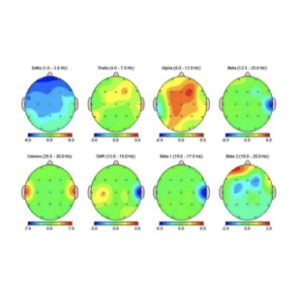


Body
Mind
Therapeutic massage
www.klachtgerichtmasseren.nl
Cognitive supplements
Soulsister.
Neurofeedback Purmerend
Setup:
At the beginning of the session, electrodes (or sensors) are placed on your scalp to measure your brainwave activity. The sensors are often attached to your head using a comfortable cap or gel.
This process is painless and takes about 5–10 minutes. Some people may feel slight discomfort from the electrode gel or the cap, but it’s usually minimal and temporary.
Hormone balance
If you don’t find what you’re looking for, don’t hesitate to reach out – we’re here to guide you on your journey to a healthier brain!
